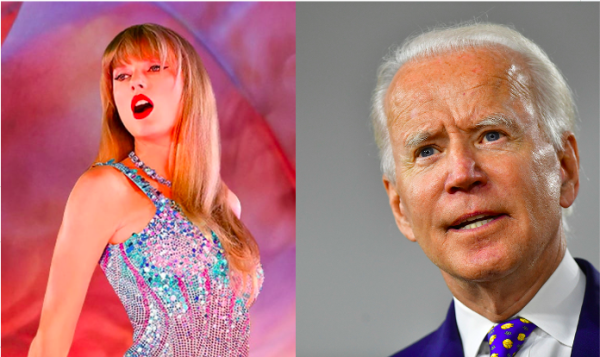It’s time to give the girl in the music box some new friends.

We live in a society in which body insecurities are significantly present in the lives of young girls. Within the dance world, these insecurities are no different, in fact they are amplified as dancers live a life surrounded by mirrors and competition, and evidently their main form of art is focused on the movement of their bodies. In addition to these factors, the dance industries and their schooling perpetuate a great amount of negative body image upon its dancers. With females being the dominant and most significant character, ballet stands out in comparison to other arts. Ballet dancers are surrounded by mirrors, reflecting each and every inch of their bodies and the other females that surround them. They strive to achieve an almost impossible image of ballet perfection, which includes a slim, graceful young girl who looks so delicate she may break after her first pirouette, and so light she can fly after her first jete. However, despite these expectations, ballet dancers hold a tremendous amount of strength and power. Their hard work is inspiring, yet ballet companies over the world must strive for complete acceptance of dedicated dancers of all shapes and sizes.
So how did the “ballet body” develop? When tracing its roots, the Historian Elizabeth Kendall explored the origins of the Balanchine body. The balanchine body stems from George Balanchine, the revered founder of New York City Ballet who developed a method with “ a strong accent on lines, intense speed, deep plies and uneven open hip arabesque positions.” His dancers reflected this method as he encouraged his dancers to “eat nothing.” The Balanchine Body includes “tall and slim to the extent of having no figure with long necks, long legs and short torsos.” Kendall traces this expectation back to St. Petersburg at the time of the Russian Revolution and Civil War. During this period of extreme deprivation, the dancers were as hungry as their audience.” However they maintained their “inner and physical strength — something simultaneously spectacular and scary.” To be physically ill from hunger during a war, to then inspire a body type that encapsulates the art form for decades ensures destruction in the future. As Ellie Hunt, ballet dancer of 15 years observes from Kendall’s findings, “The basis of our stereotypes of the ballerina, then, are women whose bodies were molded by hunger, who had to fight to take control of the reserves of strength left in them.”
The stereotypical “ballet body” has been detrimental to dancers around the world. Instead of having the privilege to express themselves in an age-old art form, dancers struggle with anorexia bulimia and, as a result, related mental health illnesses. In her autobiography, Gelsey Kirkland suggested that “Balanchine was responsible for the anorexia, bulimia, and drug addiction that almost killed her.” In an interview, famous ballerina Misty Copeland, first black principal dancer with the American Ballet Theater, discusses her development of a binge eating disorder. The artistic staff called her to their office after practice stating that,“Your body has changed. The lines you’re creating don’t look the way they used to. We’d like to see you lengthen.” Misty shares that after this instance she felt lost as “I had always been proud of my body—its strength and grace enabled me to pursue my passions. But now it has become the enemy.” Leaders in the dance industry must begin to embrace all body types and the strength and power that women uphold, as opposed to bringing them down through harsh criticism and damaging comments. Ballerinas should feel as though their bodies are their heros, not their enemies.
Madison Wilson, who attends Sandy Spring Friends school, and will attend UNCSA for dance next year, answered specific questions regarding her experience as a ballerina. I asked her how many years she had been dancing ballet, and she replied, “I have been dancing 13 years of ballet.” She told me she dances at “Berrend dance center.” I asked Madison if she felt as though she had been affected by any sort of body issues or body confidence issues. She said, “I think, although there are many different body types,I have definitely been affected. Because you have to look at yourself in the mirror everyday, and you have to try on costumes, and you have to go leotard shopping, and it seems as though everyone is smaller than you. And then when you start partnering it becomes ten times worse because you internally feel like the heaviest person in the room.” In response to this I asked if she felt as though this is stimulated through competition between other dancers. She replied, “Yes, but I don’t think it is like being out in the open. I feel like with your friends you just want them to succeed, but you guys are always comparing yourselves to one another. And you want to be nice, so it is challenging to just say ‘oh my gosh, I hate my body’ because everyone will disagree. And I think the majority of it is in your brain.” Finally I asked about her recommendation as an approach to fixing this issue. She offered insight stating, “I think just knowing that your body is all you have. And you need to take care of it to the best of your ability. Your friends are all going to look different from you and all you can do is try your best to take care of what you have.”
Ballet is a magnificent art form encapsulating grace, strength and power. However, we must not allow society to overlook the harmful effects ballerinas face towards their body image. In order to fully embrace the talent and power of ballerinas around the world, dance companies must learn to accept and encourage all body types who are eager to pour their hearts into dance. It is time for the slender blonde ballerina sitting inside your childhood music box, spinning for hours to a redundant waltz, to be joined with other ballerinas of all different shapes and sizes!

Hi! My name is Aviva Blumenthal and I am a 12th grader at Sandy Spring Friends School. I have enjoyed writing for a long time and love reading the works...





